Triboro on the power of ideas
The duo behind the New York-based design studio discuss their diverse portfolio and nurturing the next wave of talent.
Stefanie Weigler, co-founder of Triboro, has some great career advice for aspiring designers: "If you're looking to have a career with some longevity, it's best not to become identified with a single style because you risk losing relevance as the trend plays itself out. It's better to care about ideas because they last longer," she insists. "Young designers should not be afraid to take chances, and look beyond surface."
Weigler's worth listening to, because back in 2010 she was named by the Art Director's Club as one of the year's Young Guns. Five years earlier David Heasty, the other co-founder, was also a Young Gun. Both partners converted the early promise suggested by the award into successful careers and a range of fantastic, eclectic work.
Sometimes they come up with solutions so simple and perfect that you might find yourself green with envy. Take, for example, a recent project for Nike to link the brand with New York City. David and Stefanie noticed that, with a little clever occlusion, parts of the Nike logo can be removed so that it spells NYC, but remains identifiably Nike. So, they whited out parts of the letters on a T-shirt, picked away stitching on a cap, and even rendered the Nike/NYC logo in neon.
With that handmade feel to it, the project reflects the city's entrepreneurial spirit and the creative vibe that spreads from Manhattan to Brooklyn, and on to districts like Williamsburg and Greenpoint, where the Triboro studio is based. It also ties in with Nike's 'Just do it' tagline. Many of the executions will remind you of guerrilla marketing, only in this case the subversiveness of it is being channelled by the brand itself. Nike has implemented Triboro's ideas in many ways. It's been printed on the court at a basketball tournament sponsored by Nike, and the sports brand also sells NYC hats with sections of the stitching unpicked.
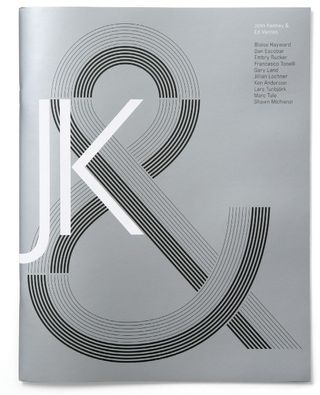
"We often approach projects by creating a system that can live and evolve long after our involvement, and this can be really good for identities for example, but may be a bad approach for a poster or an album cover," explains Heasty.
Aesthetic appeal
That said, they've still designed some excellent album covers and other music-related work. "We have very similar taste," continues Weigler. "I think that is crucial for working together successfully. If we had completely different aesthetics I think we would argue all the time and might split up the business."
"It's quite uncanny – I think we almost always agree when it comes to design," reckons Heasty. "I'm not sure if this has something to do with the fact that we shared the same mentor [designer Alexander Gelman] or if our brains are just wired the same way. But it definitely makes the process more efficient."
Their ways of working are so well suited that it almost seems like a match made in heaven. Indeed, aside from running Triboro together over the last few years, they are a married couple and regularly work side by side from their home in Greenpoint, Brooklyn. They first met when Weigler, originally from Düsseldorf in Germany, was working at Design Machine, which is Alexander Gelman's New York branding studio.
Heasty, on the other hand, is from Texas. He had previously worked as Gelman's assistant but then moved on to work in magazines. He used to drop by Design Machine once in a while. It wasn't exactly love at first sight, but there was certainly a connection. However, six months later Weigler had to return to Germany when her visa expired. Fortunately, the relationship survived its trans-Atlantic phase and a year later they married.
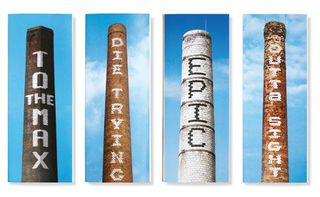
In 2008, Triboro was born. The studio is named after a local word in New York that simply means 'three boroughs'. Which three of the city's five boroughs the word describes is often vague, but Triboro traditionally has a semi-industrial connotation – companies like Triboro Metal Shelvings, Triboro Livery Service and Triboro Waterproofing. Where their studio is located used to be full of similar light industries, however it is now an increasingly creative area. Heasty and Weigler chose Triboro because they wanted a name that would keep some of the district's heritage alive. When they first moved in, many of their neighbours were Polish immigrants, but now the area is home to more and more photographers, artists, illustrators and musicians. And just down the road in Williamsburg you'll find hipster central.
"At first one of us kept our full-time job, hedging our bets, because we didn't know if we could support ourselves. After about a month we realised that we were pretty busy and could both focus on Triboro exclusively. We have been sitting and working next to each other since then," says Heasty.
Weigler adds: "It's just the two of us. We work out of our home. We don't think of it as an office. It's more personal. There is no separation between work and life. The set-up is very streamlined and allows us to work whenever and to rest whenever."
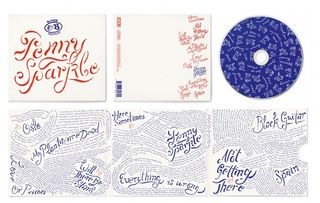
Their first project was for William Rast, a fashion brand launched by Justin Timberlake, and it helped Triboro survive its first two years. In 2008 the recession was raging and New York's design and advertising scene was haemorrhaging, but they got to sink their teeth into a variety of disciplines. "Besides establishing the new identity and the packaging and labelling elements that come with it, we were designing graphics for the fashion collections, stores and displays, and advertising. It was a surreal experience working on a celebrity brand," says Heasty.
Downtown connections
The Rast work also put them in touch with Johan Lindeberg, with whom they still work. Lindeberg designs a jeans label called BLK DNM, with an outlet on Lafayette Street. Triboro has developed the BLK DNM identity as well as labelling, displays and advertising campaigns to support the brand. Like the Nike NYC project, it's a New York phenomenon with global potential.
Over the last six years, a client list that's as eclectic as the studio's work has been compiled. Beer brands nestle alongside leading US magazines, music bands, broadcasters and museums. They are equally happy working with creative and cultural bodies as they are with commercial brands. "Working for Gelman was an eye-opening experience. He demonstrated that a small studio can be highly effective and efficient. I learned from him that you can do great work for corporate clients. Many designers believe that creative work can only be achieved for cultural clients," says Weigler.
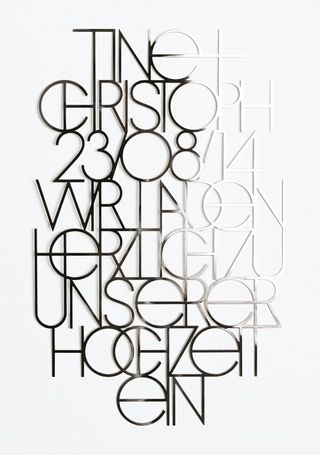
She adds: "Even though we don't have a particular style, we think that there is still a thread, a certain approach and sensibility that is visible in our work over the years. There is something that draws clients to us and enables them to trust us and take a chance on us. For example, we had never designed a hotel or restaurant identity before when we were hired by [hotelier] André Balazs to work on The Standard. The clients seem to see the eclecticism in our portfolio and recognise possibilities and abilities in us."
There are some interesting reasons behind the eclecticism evident in Triboro's portfolio. One is that they will often turn down work if they're asked to repeat something. Clients saying, 'I want one just like his,' might not get a look in. However, the look and feel of the work originates in their creative approach. They aren't interested in focus testing, or finding the median consumer. Instead, they rely on their intuition.
"In the early stages of our projects we really spend a lot of time thinking about what kind of feeling people should have when they encounter the design," explains Heasty. "That really factors into the aesthetic decisions we make. This is part of the fun of being a designer. Trying to get into the heads of your audience and imagining who they are and what will resonate with them."
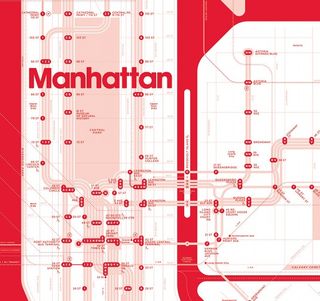
The choice of typefaces, use of white space, selection of photos or illustrations – it's all based around evoking the right feeling. Sometimes, a creative concept will come from a hidden gem within the brief, or a random phrase uttered by the client. This will inspire Triboro's creative journey. They encourage their clients to feel they're part of a collaboration.
Brand schooling
In addition to their design work, they teach conceptual branding at Parsons The New School for Design, located in downtown Manhattan. Students are asked to come up with business proposals and work out the visual language for them. Teaching new designers who don't have the industry's baggage on their shoulders is refreshing for Heasty and Weigler.
At any given time, each partner will be working on about five projects. They usually split the smaller projects between them and then work together on the larger ones that come their way. Working from their home, they evaluate each other's work at every step of the process. The emphasis throughout is very much on the design work, rather than on thoughts of growing the business, hiring and managing staff and finding a dedicated studio to work from. Neither partner is ready to be tied up in meetings all day or to focus on management and finance.

"This is something we try to avoid whenever possible," says Weigler. "We have to use our energy wisely, therefore working from home helps to charge our batteries. It's a sanctuary in an otherwise crazy environment. We live right by a park in Greenpoint, it's nice to look out your window and see trees."
Words: Garrick Webster Photography: Frances Tulk-Hart
This article originally appeared in Computer Arts issue 230.

Thank you for reading 5 articles this month* Join now for unlimited access
Enjoy your first month for just £1 / $1 / €1
*Read 5 free articles per month without a subscription

Join now for unlimited access
Try first month for just £1 / $1 / €1
Get the Creative Bloq Newsletter
Daily design news, reviews, how-tos and more, as picked by the editors.
The Creative Bloq team is made up of a group of design fans, and has changed and evolved since Creative Bloq began back in 2012. The current website team consists of eight full-time members of staff: Editor Georgia Coggan, Deputy Editor Rosie Hilder, Ecommerce Editor Beren Neale, Senior News Editor Daniel Piper, Editor, Digital Art and 3D Ian Dean, Tech Reviews Editor Erlingur Einarsson and Ecommerce Writer Beth Nicholls and Staff Writer Natalie Fear, as well as a roster of freelancers from around the world. The 3D World and ImagineFX magazine teams also pitch in, ensuring that content from 3D World and ImagineFX is represented on Creative Bloq.
